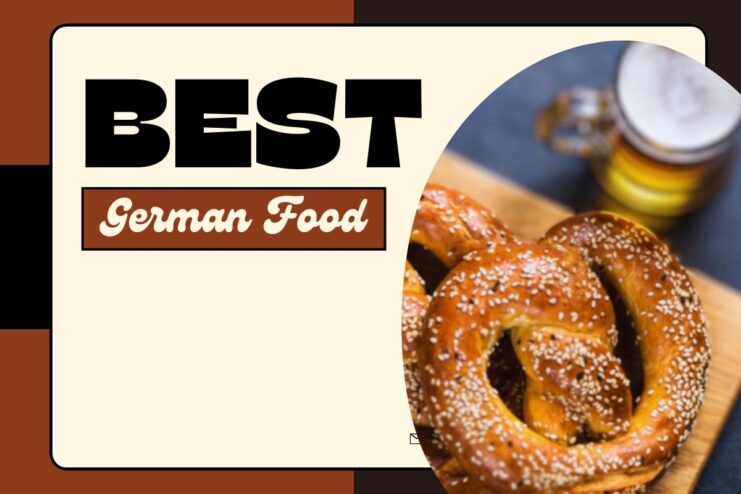Guten Tag! Are you ready to embark on a delectable journey through the heart and soul of German cuisine? We all know Germans take their food seriously, and for good reason – their traditional dishes are simply unbeatable!
So, put on your apron and raise your beer stein as we explore the 15 best German foods to try. Get ready to savor the authentic taste of Germany and experience the culinary magic that has made these people proud for generations.
1. Sauerbraten
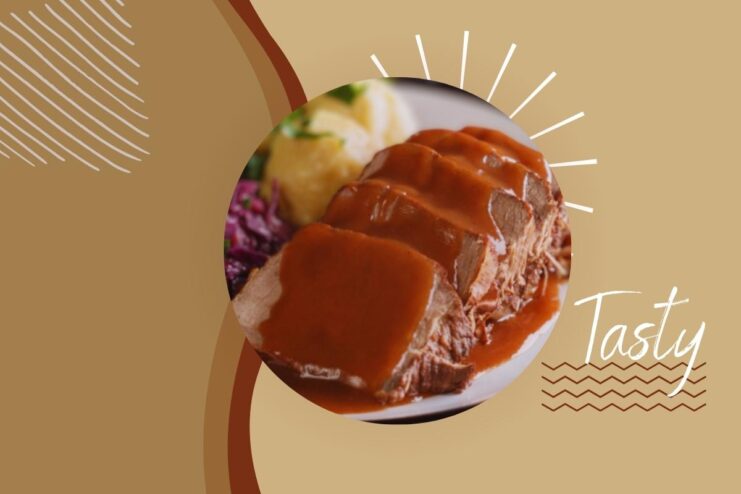
Sauerbraten, often dubbed Germany’s national dish, is a pot roast that can be prepared from a variety of meats. Typically, the meat is marinated for several days in a mixture of vinegar or wine, water, and an array of herbs and spices before it’s slow-cooked to perfection.
Its Origin
Historically, Sauerbraten was made with horse meat, but today it’s more commonly prepared with beef. The name “Sauerbraten” translates to “sour roast”, a nod to its unique marinating process that involves souring or pickling the meat.
This method was used as a means of preserving meat before refrigeration. The exact origin of Sauerbraten is not clear, but it is believed to date back to the 9th century. It was popular among hunters as a method to make less tender meat more palatable. Today, it’s a beloved dish enjoyed during festive occasions and Sunday family meals.
2. Bratwurst
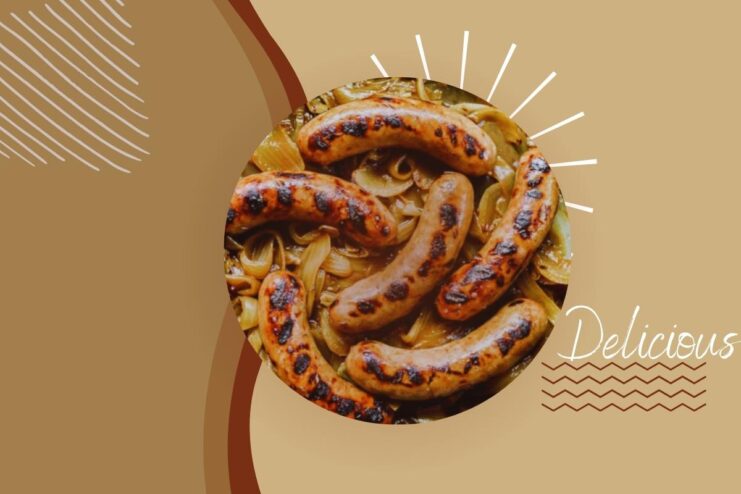
Bratwurst is a type of German sausage made from pork, beef, or veal. It’s one of Germany’s most beloved street foods and can be found in every corner of the country, each region boasting its unique take on the classic bratwurst.
Bratwurst Varieties
There are over 40 recognized types of Bratwurst in Germany, differing in size, seasoning, and preparation methods. Nuremberg bratwursts, for instance, are small, thin, and spiced with marjoram. Thüringer bratwurst, on the other hand, is long, thick, and seasoned with a variety of herbs and spices, including caraway, marjoram, and garlic.
Bratwurst is traditionally grilled or pan-fried, often served with mustard and a slice of bread or a roll. It’s also common to find bratwurst in currywurst, a popular German street food dish where it’s served sliced and topped with curry ketchup.
3. Pretzels
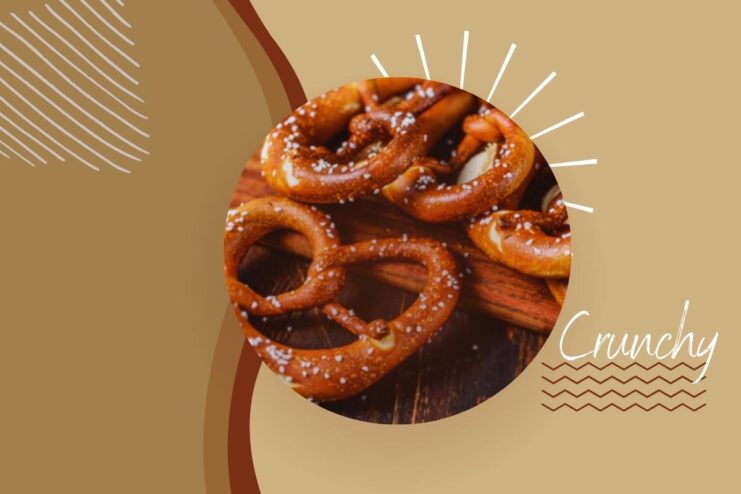
When I think of German food, pretzels are one of the first things that come to mind. These twisted bread products, known as Brezeln in German, have a unique shape and a shiny, brown crust.
Pretzels in German Culture
The pretzel has a long history in German culture. Some historians believe that pretzels, in their recognizable knotted shape, originated among monastic communities in the Early Middle Ages. The distinctive looped form is thought to represent hands in prayer.
Pretzels are ubiquitous in German bakeries, pubs, and festivals. You’ll often find them served with butter (Butterbrezel), or cut in half and filled with cold cuts or cheese (Wurst- or Käsebrezel). They are also a common accompaniment to Weisswurst, a traditional Bavarian sausage.
4. Sausages: The Weisswurst
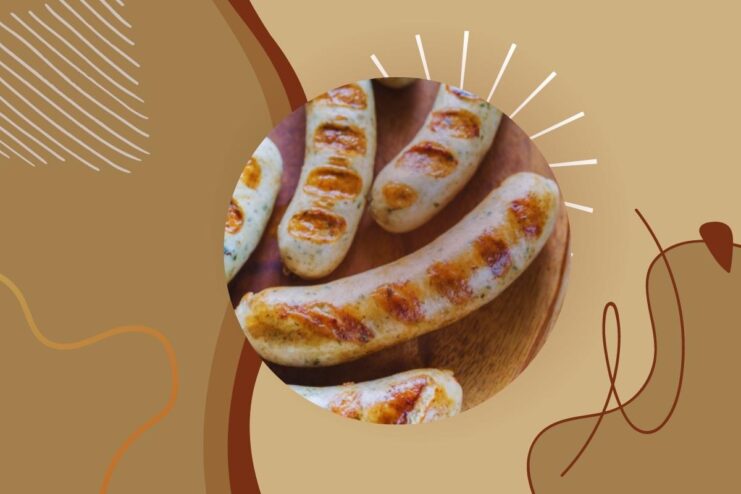
Germany’s love affair with sausages is evident in the sheer variety available – over 1,500 types! Among these, Weisswurst stands out. These white sausages are a staple in Bavaria and are traditionally made from minced veal and pork back bacon.
Weisswurst Traditions
Weisswurst was first created in Munich in 1857, and since then, it has become a symbol of Bavarian gastronomy. Traditionally, Weisswurst is served in a bowl of hot water with a side of sweet mustard and freshly baked pretzels.
An interesting tradition is that Weisswurst should be eaten before noon, a practice dating back to the era before refrigeration, as the sausages are made fresh every day and don’t contain preservatives. These are just a few glimpses into the vast, vibrant world of German cuisine.
Whether you’re planning a visit to Germany or just want to try cooking German food at home, these traditional dishes are sure to offer a taste of Germany’s rich culinary heritage. German food is about more than just sustenance; it’s a cultural experience, an art form that brings people together.
From the humble bratwurst to the festive sauerbraten, every dish tells a story of its own.
5. Rouladen
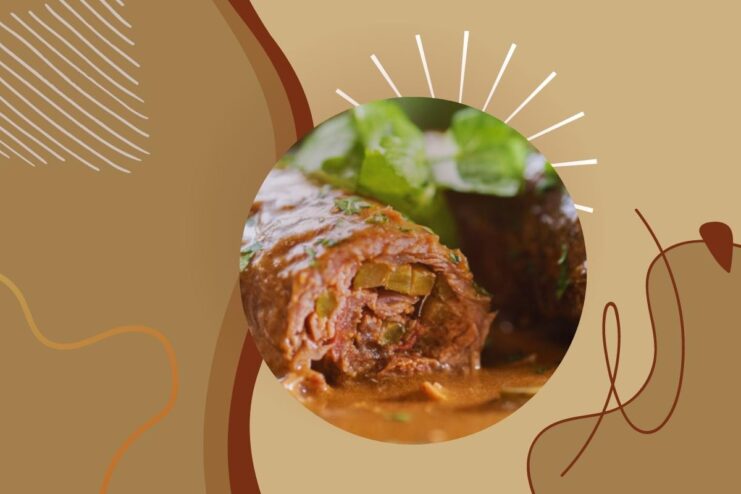
Rouladen is a traditional German dish, often served for special occasions and Sunday family meals. It consists of thin slices of beef rolled around a filling of onion, pickle, and bacon, then browned and simmered in a rich gravy.
Rouladen and German Celebrations
Rouladen is traditionally associated with celebrations and holidays in Germany. For many families, this hearty and satisfying dish is a centerpiece during Christmas dinners. The delicious combination of flavors – tangy pickle, smoky bacon, and savory beef – makes Rouladen a much-loved dish throughout the country.
Although Rouladen is a labor-intensive dish, the result is worth every effort. The slow cooking process allows the flavors from the filling to penetrate the beef, resulting in a rich, flavorful meal. It’s often served with potatoes, red cabbage, or spaetzle.
6. Spaetzle
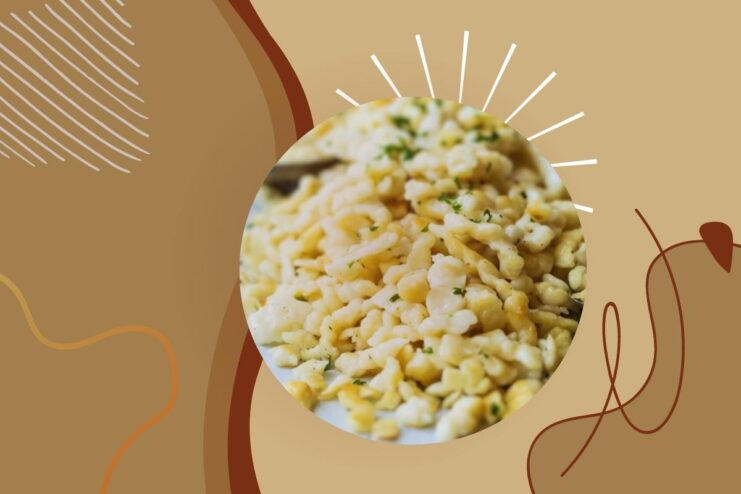
Spaetzle is a type of pasta that’s especially popular in southern Germany. Made from eggs, flour, and salt, Spaetzle has a unique, light texture that sets it apart from other pasta types.
A Swabian Cuisine
Spaetzle originates from the region of Swabia, in southwestern Germany. It’s a staple in Swabian cuisine and has been nicknamed “Swabian soul food”. The dish has even earned protected status in Europe, which means that true Swabian Spaetzle can only come from Swabia.
Spaetzle is usually served as a side dish with meat and gravy. It can also be used in a variety of dishes, from soups to salads. One popular variation is Käsespätzle, where the noodles are mixed with caramelized onions and cheese to create a German version of macaroni and cheese.
7. Eisbein
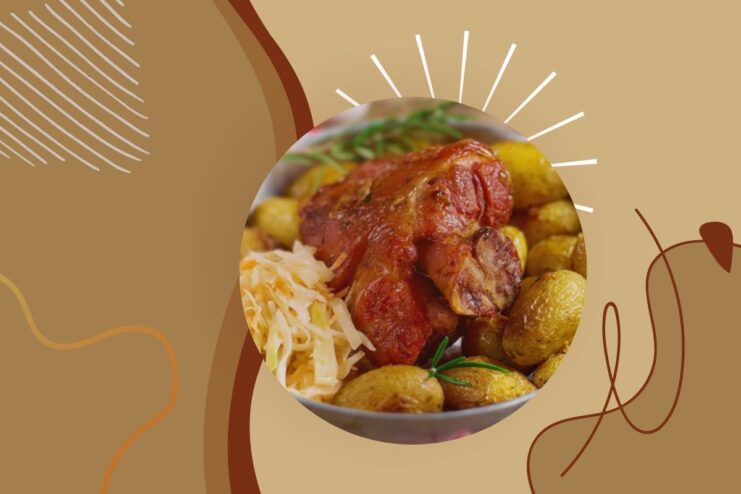
Eisbein, or pork knuckle, is a traditional dish in Berlin. The name translates to “ice leg” in English, a reference to the fact that butchers would often use the shin bone to make ice skates.
A Berliner Speciality
In Berlin, Eisbein is traditionally boiled with peas, carrots, and onions to create a flavorful broth. The meat is then served with sauerkraut and boiled potatoes. Despite its heavy appearance, Eisbein is actually quite tender and delicate in flavor.
Eisbein is a hearty, satisfying dish, perfect for cold winter days. The contrast between the tender meat and the crispy skin is a delight for the senses. Although it’s not as well-known outside of Germany as some other dishes, Eisbein is a must-try for any food lover visiting Berlin.
8. Kartoffelpuffer
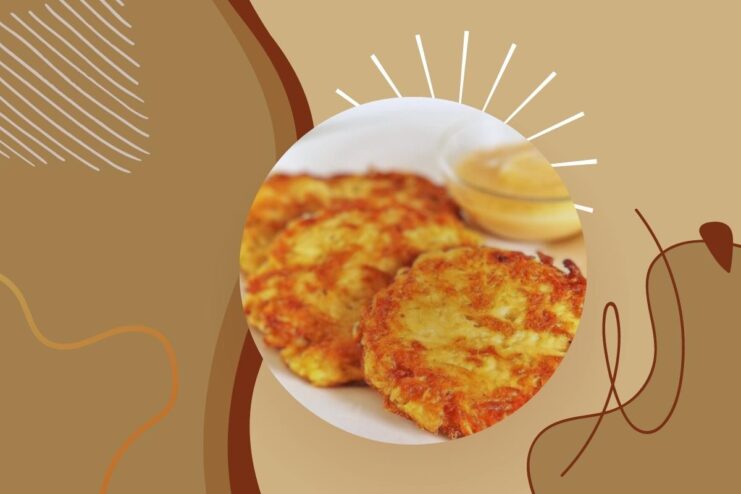
Kartoffelpuffer, or potato pancakes, are a versatile German dish. They’re made from grated potatoes mixed with flour, egg, and onions, then fried until crispy.
A Dish for All Occasions
Kartoffelpuffer can be enjoyed in various ways. They’re often served as a side dish with meat, but they can also be a main dish or even a dessert. For a savory meal, Kartoffelpuffer can be topped with smoked salmon or sour cream.
For a sweet treat, they can be served with apple sauce, cinnamon, or sugar. These crispy pancakes are a favorite during Christmas markets in Germany, where they’re often enjoyed with a glass of Glühwein. Their versatility and delicious taste make Kartoffelpuffer a beloved dish among Germans and tourists alike.
9. Maultaschen
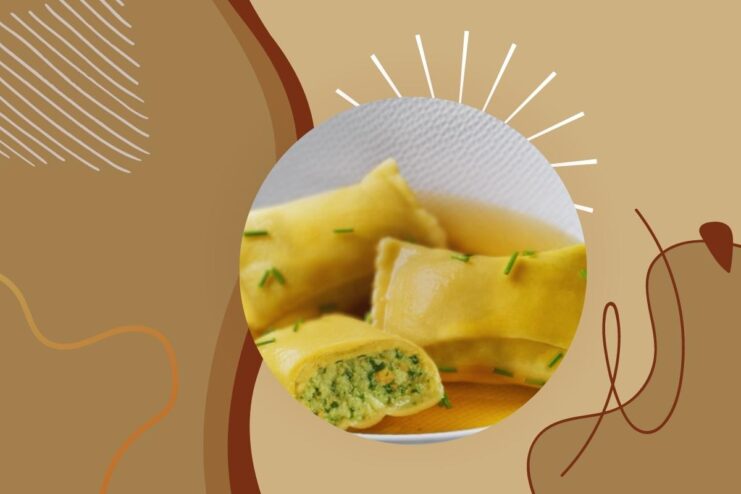
Maultaschen, also known as Swabian ravioli, are large stuffed pasta squares, traditionally filled with a mix of spinach, ground meat, onions, and bread. This dish is especially associated with the region of Swabia in Baden-Württemberg.
A Holy Week Tradition
An interesting legend about Maultaschen relates to its role during the Christian Holy Week. The dish is often eaten during this period, especially on Maundy Thursday and Good Friday, when religious customs call for abstention from meat.
The meat in Maultaschen is concealed by the pasta casing, humorously referred to as “Herrgottsbscheißerle” (little cheaters on God), as it allowed the devout to “hide” the meat from God. Maultaschen can be either boiled or fried, served in soup or with onions and eggs.
Regardless of the preparation, this hearty, filling dish reflects the comforting and unpretentious nature of German cuisine.
10. Apfelstrudel
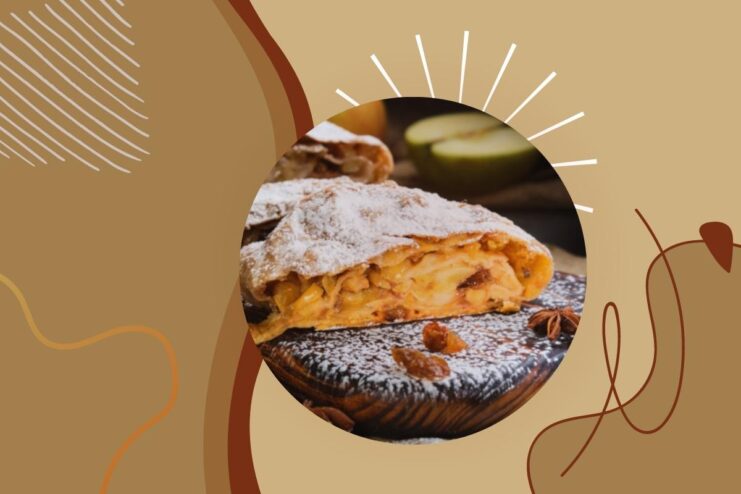
Apfelstrudel, or apple strudel, is a popular dessert in Germany, especially in areas close to the Austrian border. The strudel is filled with tart apples, sugar, and spices, all wrapped in a thin, crisp pastry.
While Apfelstrudel is believed to have originated in Austria, it has become a beloved dessert across Germany as well. The contrast of the tart apples and sweet pastry, along with the addition of warming spices like cinnamon, creates a comforting and satisfying dessert.
It is typically served warm, often with a dusting of powdered sugar on top. It can also be accompanied by a dollop of whipped cream, a scoop of vanilla ice cream, or a pour of vanilla sauce. It’s a perfect dish to enjoy in the cooler months, but it’s so beloved that you’ll find it on menus year-round.
11. Currywurst
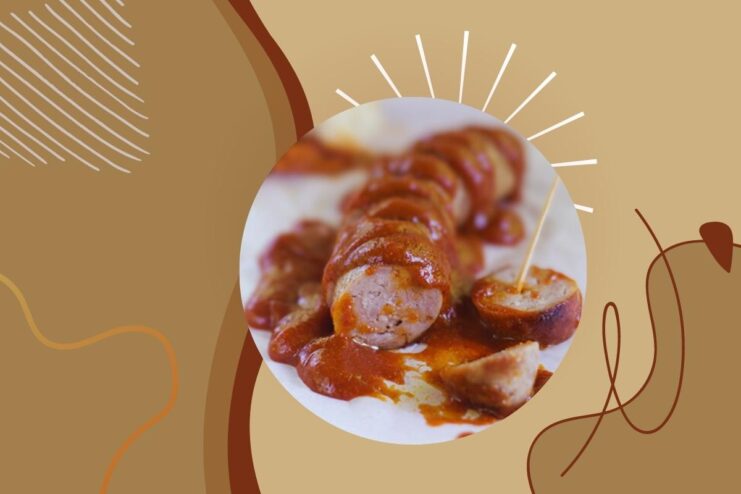
Currywurst is one of the most popular street foods in Germany. It consists of steamed, then fried pork sausage, which is then cut into slices and seasoned with curry ketchup, a sauce made from ketchup or tomato paste mixed with curry and other spices.
A Berlin Street Food Icon
Created in Berlin in the late 1940s, Currywurst quickly became a popular snack across the country. Its combination of familiar flavors – savory sausage, tangy tomato ketchup, and warming curry spices – is hard to resist.
The success of Currywurst is such that there’s even a Currywurst museum in Berlin, where you can learn about the history of this iconic dish.
12. Sauerkraut
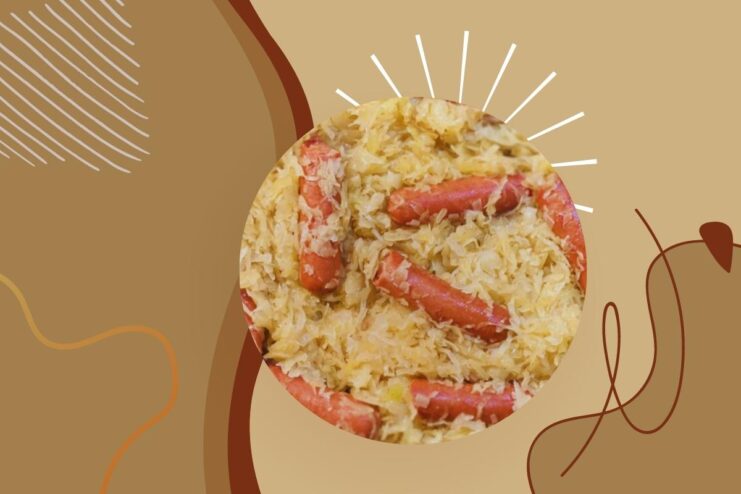
Sauerkraut, or fermented cabbage, is a staple in German cuisine. This tangy, sour side dish pairs well with many German foods, including sausages, pork, and potatoes.
An Ancient Food Tradition
The art of fermenting cabbage into Sauerkraut has ancient roots and was likely brought to Germany by the Mongols. This simple yet flavorful dish not only adds a tangy crunch to meals but it’s also packed with beneficial probiotics, making it a healthy addition to any meal.
In Germany, Sauerkraut is often slow-cooked with various seasonings and served warm. While it’s available year-round, it’s a particularly comforting dish during the colder months, when its hearty, warming properties are most appreciated.
13. Leberkäse
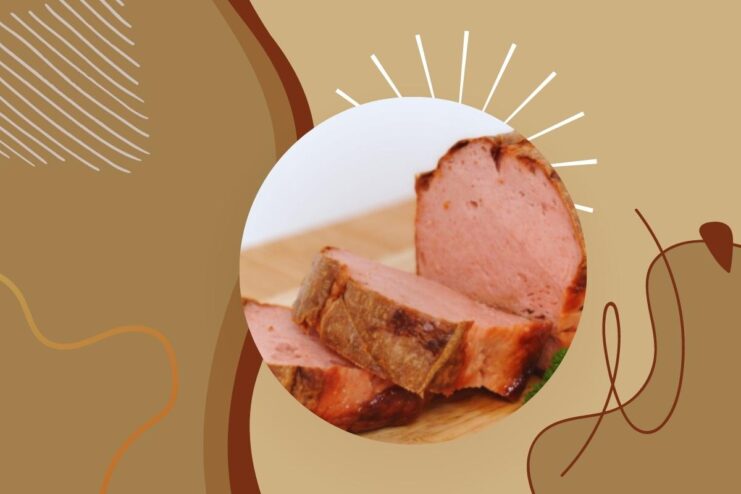
Leberkäse, which translates to “liver cheese,” is a popular dish in southern Germany. Contrary to its name, Leberkäse often contains neither liver nor cheese. It’s a type of sausage made from finely ground pork, beef, onions, and various spices, baked until it forms a crispy brown crust.
Bavaria’s Beloved Fast Food
Originating in Bavaria, Leberkäse is often eaten as a fast food. It’s commonly served warm on a bread roll, making it a popular choice for a quick, on-the-go meal. Leberkäse has a unique, smooth texture and a savory flavor. The contrast between the crispy crust and the soft interior is particularly enjoyable.
14. Königsberger Klopse
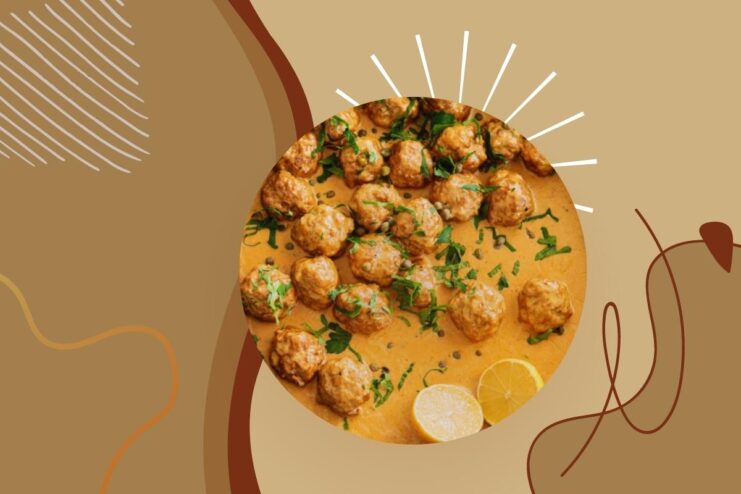
Königsberger Klopse, or “meatballs of Königsberg,” is a traditional German dish hailing from the city of Königsberg (now Kaliningrad, Russia). The dish consists of meatballs made from ground veal, beef, or pork, served in a creamy white sauce with capers.
A Dish with History
Named after the former East Prussian capital, Königsberger Klopse is a dish steeped in history. Despite the city of Königsberg no longer being a part of Germany, the recipe has been preserved and is still enjoyed throughout the country today.
The combination of the savory meatballs, the tangy capers, and the rich, creamy sauce creates a harmonious blend of flavors. Königsberger Klopse is often served with potatoes or rice, making it a comforting and satisfying meal.
15. Schwarzwälder Kirschtorte
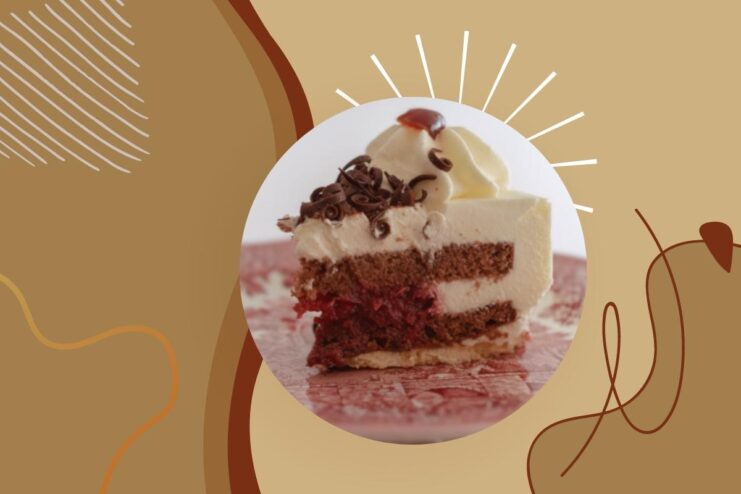
Schwarzwälder Kirschtorte, or Black Forest Cake, is one of the most famous German desserts. This indulgent cake consists of several layers of chocolate sponge cake, whipped cream, and cherries, all drenched in Kirschwasser, a cherry schnapps.
Named after the Black Forest region in southwestern Germany, Schwarzwälder Kirschtorte is a visual feast with its layers of dark chocolate cake, white cream, and bright red cherries. The addition of Kirschwasser gives the cake a unique, boozy twist.
While the origins of Schwarzwälder Kirschtorte are unclear, it’s believed to have been created in the early 20th century. Regardless of its origins, this decadent cake has earned a place in the hearts of dessert lovers around the world.
FAQs:
What are the differences between German and Austrian cuisine?
These two cuisines share similarities, but Austrian cuisine is known for dishes like Wiener Schnitzel and Sachertorte.
Are there any traditional beverages to accompany these dishes?
Yes, Germans enjoy beverages like beer, especially during Oktoberfest, and Glühwein (mulled wine) during the Christmas season.
Are there any soups worth trying?
Yes, popular German soups include Goulash soup, Erbsensuppe (split pea soup), and Sauerbratensuppe (sour roast soup).
What is Oktoberfest?
Oktoberfest is an annual beer festival held in Munich, Germany, celebrating Bavarian culture with traditional food, music, and of course, beer.
Can you recommend some street foods?
Popular street foods include Currywurst (curry sausage) and Döner kebab.
Conclusion
Germany is a country rich in culinary delights, each dish telling a story of its region, its history, and its people. From hearty main courses to indulgent desserts, German cuisine is as diverse as it is delicious. Food plays a crucial role in this culture. It’s a way to bring people together, celebrate special occasions, and express regional identities.
Each dish we’ve explored in this blog post showcases not only the diversity of their cuisine, but also the tradition, heritage, and passion for food that runs deep in the German psyche. So, whether you’re in Germany or at home, we encourage you to take a culinary journey through Germany – one delicious dish at a time.
This is just a taste of the wide range of foods Germany has to offer. There’s a world of flavors waiting to be discovered. Guten Appetit!

